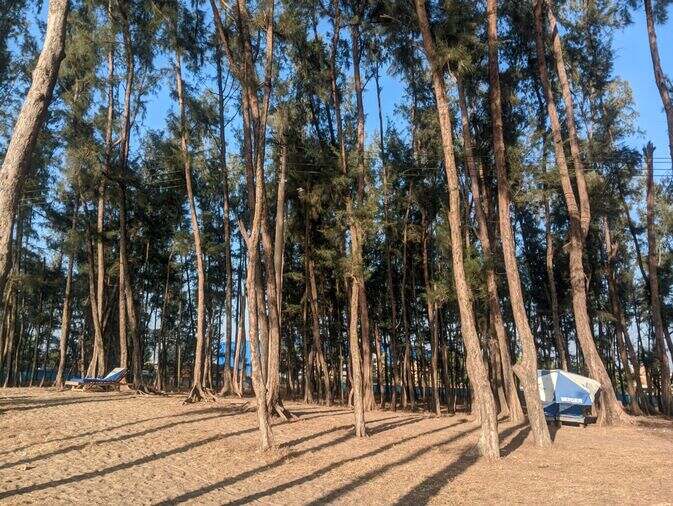Casuarina trees, locally known as jhau trees, line much of the Cox’s Bazar coastline, thriving in the saline conditions of the region.
These trees play a crucial role in maintaining coastal stability by preventing soil and sand erosion along the shoreline.
Their presence enhances the beach’s natural ambiance, providing a cooler, more pleasant environment for visitors, making them a significant feature of the area’s ecological and aesthetic appeal.
The jhau forests are also a haven for diverse wildlife, including birds, insects, and small animals, making them vital for local biodiversity.
These forests serve as safe habitats for numerous species, emphasizing the need to preserve their natural environment.
However, the growing influx of tourists in recent years has led to significant environmental degradation of these forests.
Unregulated construction, improper waste disposal, and the felling of trees have posed serious threats to their existence. If we do not take immediate action, the region’s ecological balance may suffer irreversible damage.
Local authorities, environmentalists, and stakeholders must work together to protect these forests. Effective measures such as sustainable tourism practices, stricter regulations, and community awareness programs are essential to ensure the conservation of this natural treasure.
Preserving the jhau forests of Cox’s Bazar is not only crucial for maintaining the natural beauty of this iconic coastline but also for safeguarding the environmental health of the region and beyond.
Through proper management and heightened awareness, these forests can continue to serve as a testament to Cox’s Bazar’s rich natural heritage.
By Rajin Saleh
Photo: Rajin Saleh










